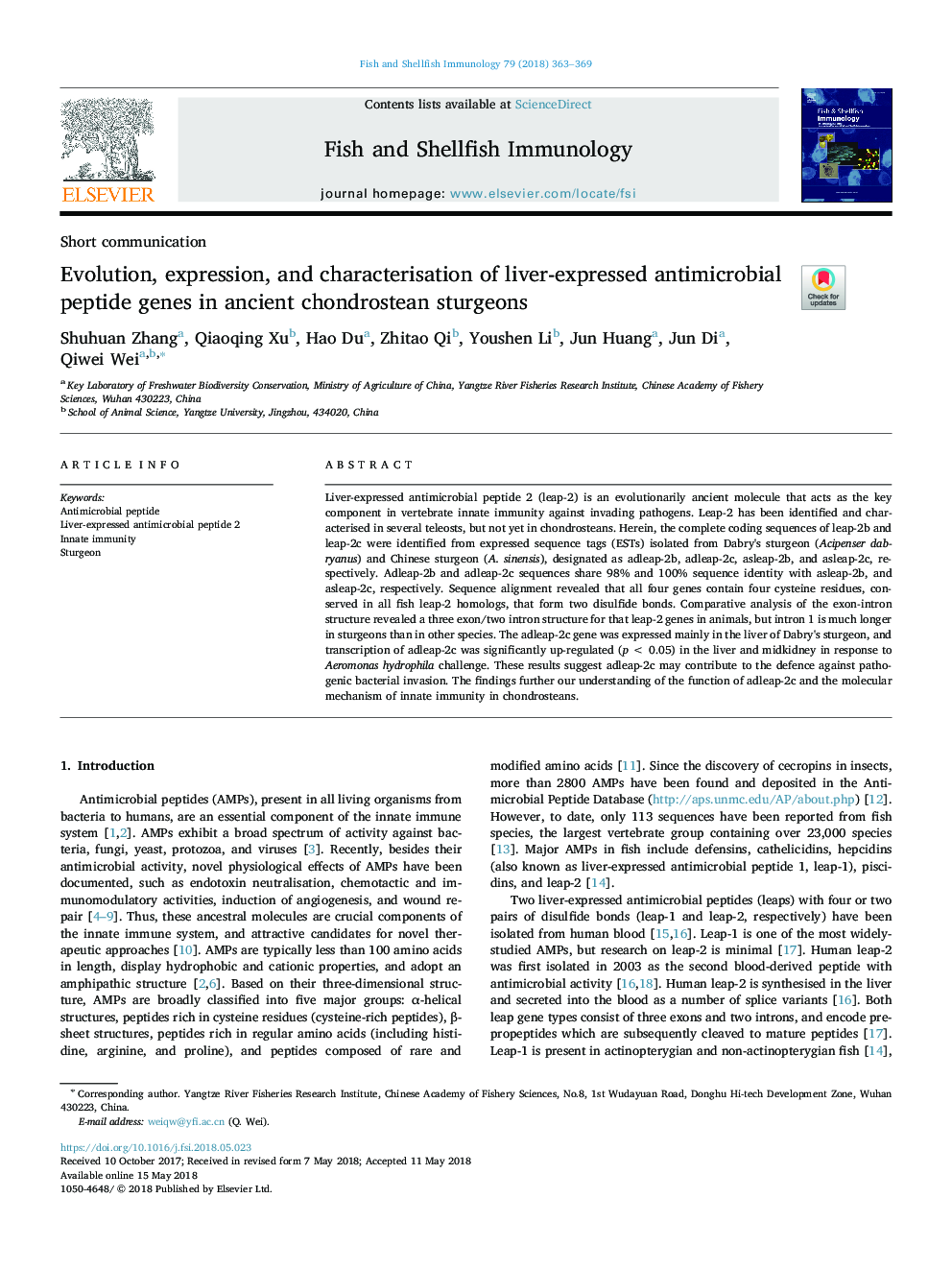| Article ID | Journal | Published Year | Pages | File Type |
|---|---|---|---|---|
| 8498350 | Fish & Shellfish Immunology | 2018 | 7 Pages |
Abstract
Liver-expressed antimicrobial peptide 2 (leap-2) is an evolutionarily ancient molecule that acts as the key component in vertebrate innate immunity against invading pathogens. Leap-2 has been identified and characterised in several teleosts, but not yet in chondrosteans. Herein, the complete coding sequences of leap-2b and leap-2c were identified from expressed sequence tags (ESTs) isolated from Dabry's sturgeon (Acipenser dabryanus) and Chinese sturgeon (A. sinensis), designated as adleap-2b, adleap-2c, asleap-2b, and asleap-2c, respectively. Adleap-2b and adleap-2c sequences share 98% and 100% sequence identity with asleap-2b, and asleap-2c, respectively. Sequence alignment revealed that all four genes contain four cysteine residues, conserved in all fish leap-2 homologs, that form two disulfide bonds. Comparative analysis of the exon-intron structure revealed a three exon/two intron structure for that leap-2 genes in animals, but intron 1 is much longer in sturgeons than in other species. The adleap-2c gene was expressed mainly in the liver of Dabry's sturgeon, and transcription of adleap-2c was significantly up-regulated (pâ¯<â¯0.05) in the liver and midkidney in response to Aeromonas hydrophila challenge. These results suggest adleap-2c may contribute to the defence against pathogenic bacterial invasion. The findings further our understanding of the function of adleap-2c and the molecular mechanism of innate immunity in chondrosteans.
Related Topics
Life Sciences
Agricultural and Biological Sciences
Aquatic Science
Authors
Shuhuan Zhang, Qiaoqing Xu, Hao Du, Zhitao Qi, Youshen Li, Jun Huang, Jun Di, Qiwei Wei,
